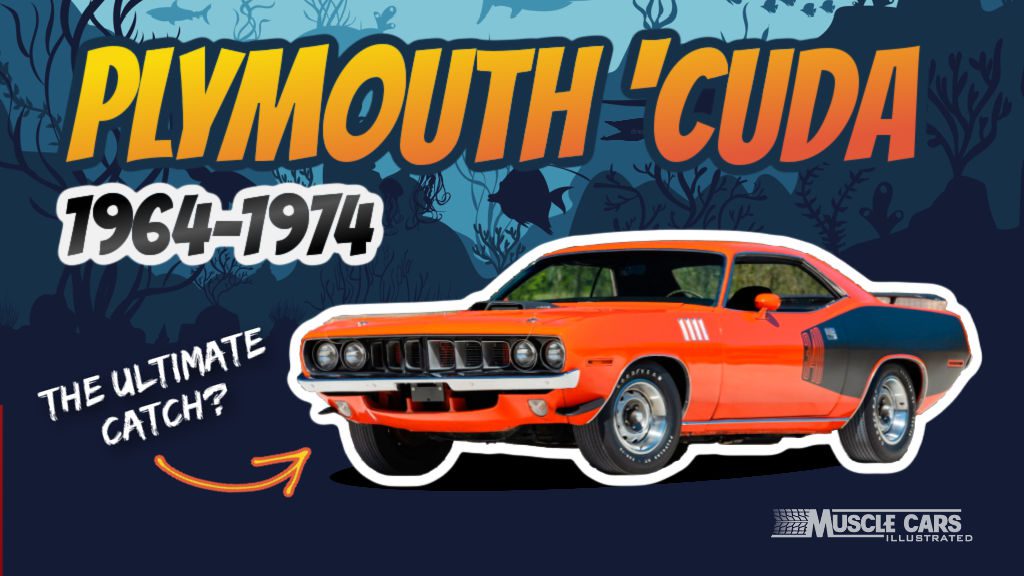
The Plymouth Barracuda competed with the Chevy Camaro, Pontiac Firebird, and Ford Mustang and helped define the muscle car era of the 1960s and 1970s as popular pony cars.
To some, however, the Plymouth Cuda is the ultimate catch.
While the first generation of the car wasn’t very remarkable, the second and third generations were equipped with powerful big-block V8 engines that could easily turn heads and shred tires.
The 426 HEMI and 440 Super Commando-powered Barracudas straddled the line between pony cars and muscle cars, making them highly coveted among collectors from the era of the horsepower wars.
Unfortunately, the Barracuda was discontinued in 1974 due to increasing emissions restrictions and new horsepower ratings, leaving behind only a shadow of its former glory.
Table of Contents
Highlights of the Barracuda
| Introduction | Plymouth completely redesigned the model in 1967, offering fastback, notchback, and convertible models. |
| Redesign | Plymouth completely redesigns the model in 1967, offering fastback, notchback, and convertible models. |
| ‘Cuda Option | In 1969, Plymouth introduces the ‘Cuda option package, offering ultra-high performance and establishing it as a sporty, performance-oriented pony car. |
| 426 HEMI | For 1970-71, Plymouth offered the powerful 426 HEMI engine in the Barracuda, making it one of the most powerful muscle cars ever produced. |
| New platform | In 1970, Chrysler moved from the A-body to the E-body platform. The Dodge Challenger was introduced on the same platform. |
| Emissions Regulations | Due to emissions restrictions and fuel economy concerns, big-block V8 engines were dropped in 1972. |
| Final Year | The last year of production for the Barracuda is 1974; by then, it is selling poorly and only a shell of its former self. |
Evolution of the Plymouth Cuda
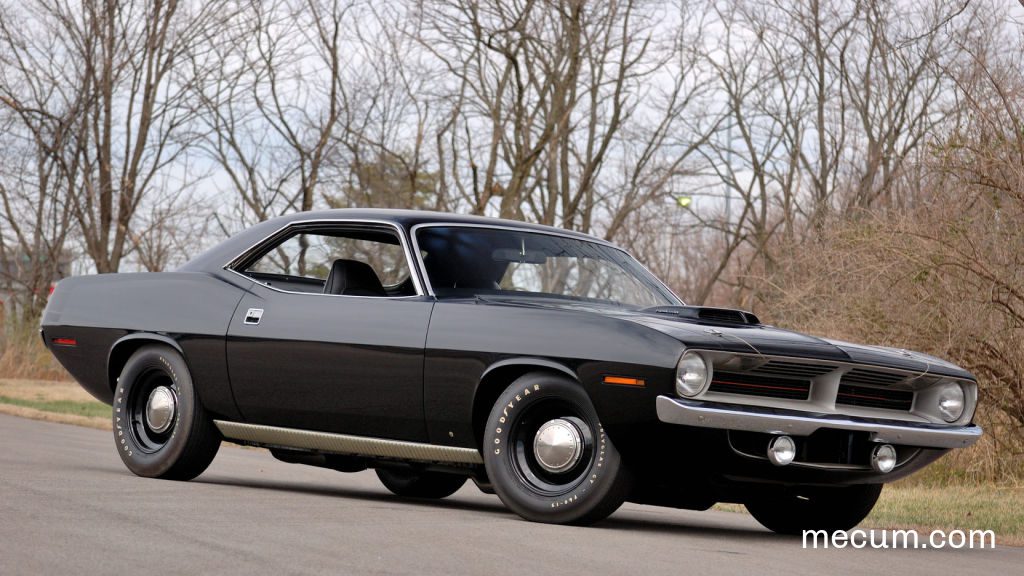
The Plymouth Barracuda was a significant player in the pony car market for 11 model years.
Originally marketed as the Valiant Barracuda, the first generation of the Barracuda was a budget car focused on convenience and reliability rather than performance. It shared the same Chrysler A-body platform as the Valiant but had a distinctive two-door hardtop-fastback design.
It evolved from a budget car to a sporty, performance-oriented pony car. Plymouth’s Barracuda boasted the powerful 426 HEMI engine during the 1970-1971 model years, making it one of the fastest muscle cars ever produced.
However, to comply with emissions regulations and fuel economy concerns, the big-block V8 engines were dropped in 1972, leading to a decline in performance and popularity. By 1974, it was selling poorly and ceased production.
| Generation | Years | Key Features |
|---|---|---|
| First Generation | 1964-1966 | Two-door hardtop-fastback design based on the Chrysler A-body platform; originally known as the Valiant Barracuda; built for convenience and reliability, not performance. |
| Second Generation | 1967-1969 | Redesigned with fastback, notchback, and convertible models; introduction of the ‘Cuda option package in 1969 for ultra-high performance; switch to sporty, performance-oriented pony car. |
| Third Generation | 1970-1974 | Complete redesign with switch to the E-body platform; availability of the 426 HEMI engine in 1970-71 for the most powerful Barracudas ever; big-block V8s dropped in 1972 due to emissions restrictions and fuel economy concerns; final year of production was 1974 with poor sales and minimal performance options. |
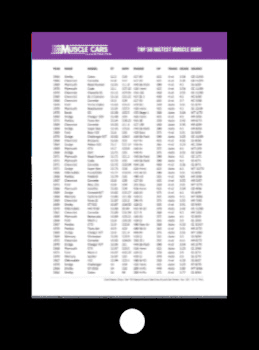
Get The Top 50 Fastest Muscle Cars chart. Includes year, model, engine, 1/4 mile times, and more—absolutely free!
1964 Barracuda
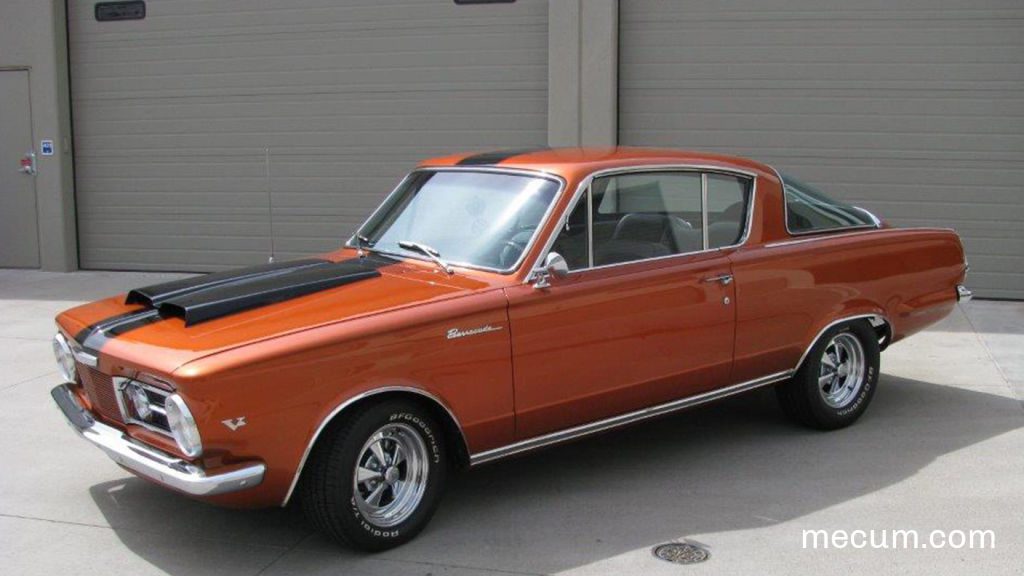
The 1964 Barracuda began an era featuring a distinctive fastback design with a large rear glass window. The base model was equipped with a 170 cubic-inch Slant-6 engine, while the optional 273 cubic-inch Golden Commando V8 engine was available for those seeking more power.
This year’s model came with a 3-speed manual transmission as standard, with the option to upgrade to a 4-speed manual or a 3-speed automatic 727 TorqueFlite transmission. The 1964 model’s styling included unique gills on the quarter panels, which became a signature design element for the model. A total of 23,443 units were produced in 1964.
- Body Length: 188.2 inches
- Wheelbase: 106 inches
- Curb Weight: 2,855 lbs
- Number Built: 23,433
- Base Price: $2,512
1964 Engine Options
| Engine | Horsepower | Torque |
|---|---|---|
| 170 cid Slant-6 | 101 | 155 lb-ft |
| 225 cid Slant-6 | 145 | 215 lb-ft |
| 273 cid V8 (2bbl) | 180 | 260 lb-ft |
1964 Production Figures
| Engine Type | Production |
|---|---|
| Six-Cylinders | 2,647 |
| V8 | 20,796 |
| Total | 23,433 |
1965 Barracuda
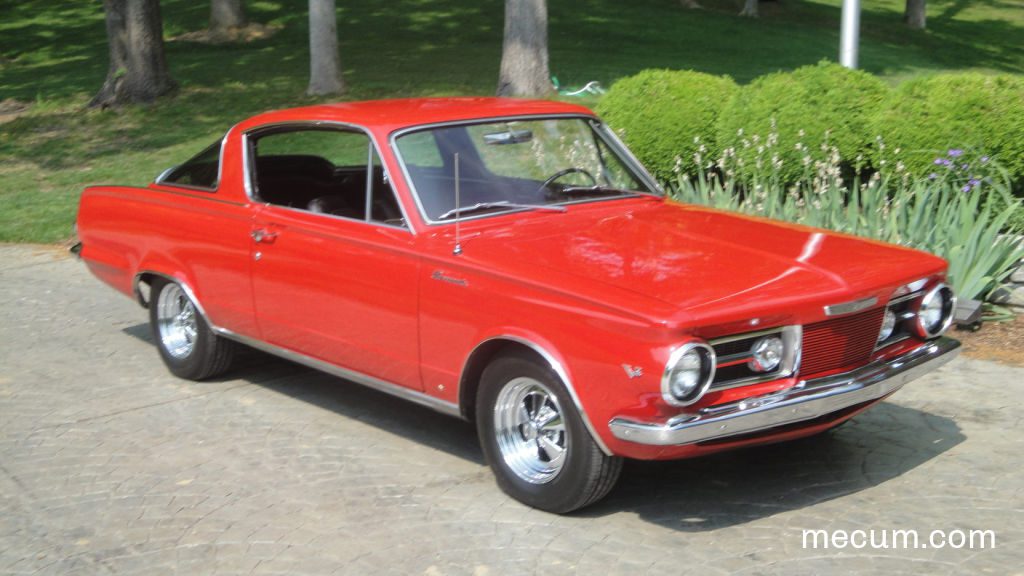
The 1965 Barracuda was built upon the previous year’s success with subtle styling and performance changes. A new Formula S package was introduced, featuring a 235 horsepower 273 cubic-inch V8 engine, front disc brakes, heavy-duty suspension, and special badging. Car Life magazine reported in its June 1965 issue that the best quarter-mile time with a 273 Commando was 15.9 seconds, with a speed of 89 miles per hour.
The base model still utilized the Slant-6 engine, but the V8 options expanded to include the 225 cubic-inch Commando V8 and the Golden Commando V8. The interior was updated with new seat designs and a revised instrument panel. Production for the 1965 model year increased to 64,596 units, which included 3,400 Formula S models.
- Body Length: 188.2 inches
- Wheelbase: 106 inches
- Curb Weight: 2,965 lbs
- Number Built: 64,596
- Base Price: $2,533
1965 Engine Options
| Engine | Horsepower | Torque |
|---|---|---|
| 170 cid Slant-6 | 101 | 155 lb-ft |
| 225 cid Slant-6 | 145 | 215 lb-ft |
| 273 cid V8 (2bbl) | 180 | 260 lb-ft |
| 273 cid V8 (4bbl) | 235 | 280 lb-ft |
1965 Production Figures
| Engine Type | Production |
|---|---|
| Six-Cylinder | 24,758 |
| V8 | 39,839 |
| Total | 64,596 |
1966 Barracuda
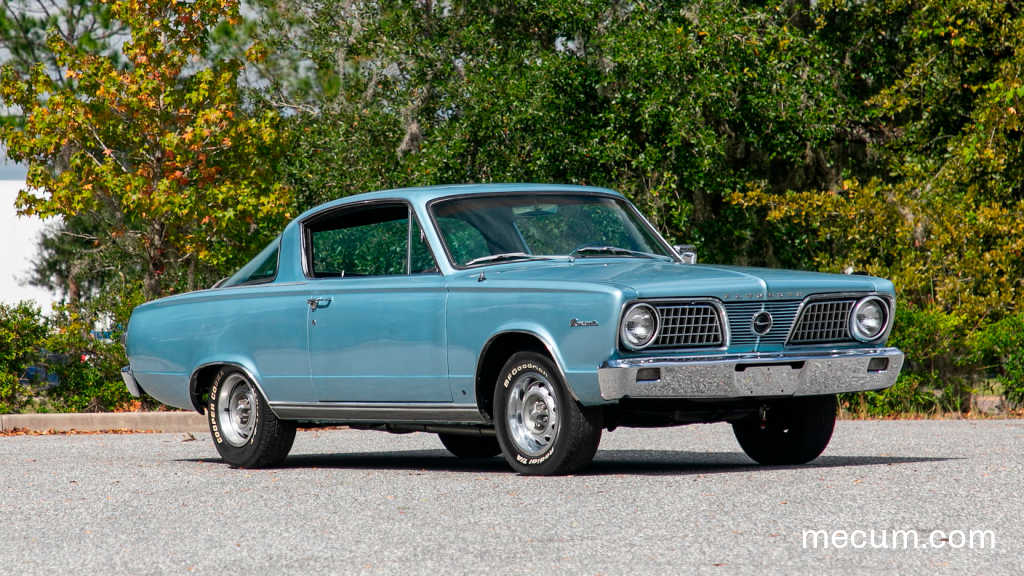
In 1966, the Barracuda received a facelift that included a new grill, taillights, and other minor styling changes.
The Formula S package was improved, now offering a new 273 cubic-inch Commando V8 engine producing 260 horsepower. Additionally, the base model received an upgraded 225 cubic-inch Slant-6 engine. According to the April 1967 issue of Super Stock & Drag Illustrated magazine, a Formula S 383 covered a quarter-mile distance in 14.53 seconds at 97 miles per hour.
Both the 3-speed manual and the 4-speed manual transmissions remained standard, with the 3-speed automatic 727 TorqueFlite transmission still available as an option. The production numbers for the 1966 Barracuda totaled 38,029 units, which included 5,316 Formula S models.
- Body Length: 188.2 inches
- Wheelbase: 108 inches
- Curb Weight: 3,020 lbs
- Number Built: 38,029
- Base Price: $2,633
1966 Engine Options
| Engine | Horsepower | Torque |
|---|---|---|
| 170 cid Slant-6 | 101 | 155 lb-ft |
| 225 cid Slant-6 | 145 | 215 lb-ft |
| 273 cid V8 (2bbl) | 180 | 260 lb-ft |
| 273 cid V8 (4bbl) | 235 | 280 lb-ft |
1966 Production Figures
| Engine Type | Production |
|---|---|
| Six-Cylinder | 16,506 |
| 273 cid V8 | 21,523 |
| Total | 38,029 |
1967 Barracuda
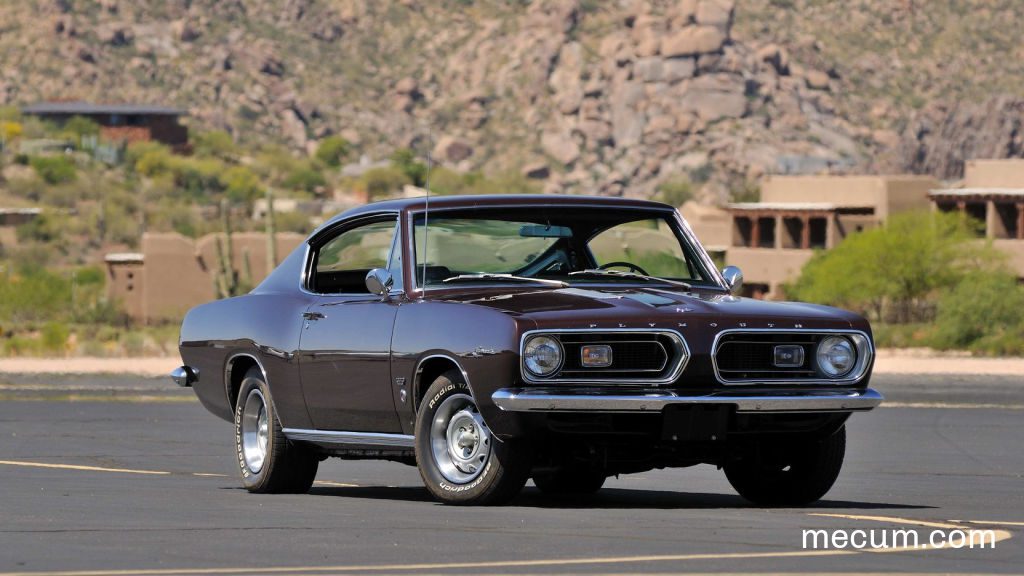
The 1967 Barracuda marked a significant departure from previous models, introducing three body styles: fastback, notchback, and convertible. A new 383 cubic-inch Super Commando
The V8 engine was also introduced, producing 280 horsepower and 400 lb-ft of torque. The base model continued to offer the Slant-6 engine, while the Formula S package retained the 273 cubic-inch Commando V8.
In total, 62,534 were produced in 1967, with 4,228 being Formula S models.
- Body Length: 188.2 inches
- Wheelbase: 108 inches
- Curb Weight: 2,950-3,020 lbs
- Number Built: 62,534
- Base Price: $2,742
1967 Engine Options
| Engine | Horsepower | Torque |
|---|---|---|
| 225 cid Slant-6 | 145 | 215 lb-ft |
| 273 cid V8 (2bbl) | 180 | 260 lb-ft |
| 273 cid V8 (2bbl) | 235 | 280 lb-ft |
| 383 cid V8 (4bbl) | 280 | 400 lb-ft |
1967 Production Figures
| Bodystyle | Production |
|---|---|
| Notchback | 28,196 |
| Fastback | 30,110 |
| Convertible | 4,228 |
| Total | 62,534 |
1968 Barracuda
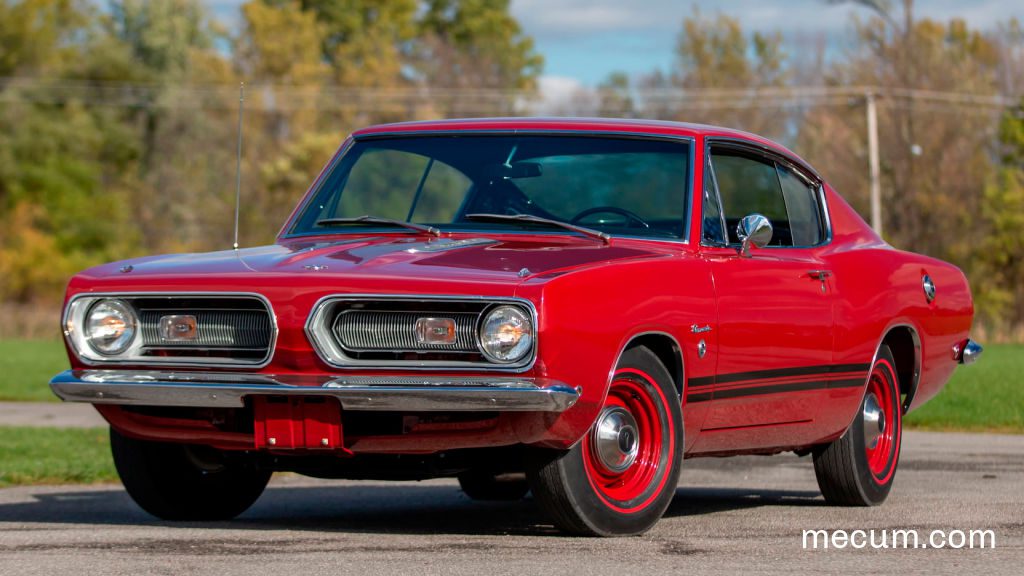
The 1968 Barracuda received a restyling, with new front and rear end designs. The Formula S package was enhanced by adding a 340 cubic-inch V8 engine, producing 275 horsepower and 340 lb-ft of torque. The base model continued to offer the Slant-6, while the 383 cubic-inch Super Commando V8 remained available. Production for the 1968 model year totaled 45,412 units.
- Body Length: 192.8 inches
- Wheelbase: 108 inches
- Curb Weight: 3,000-3,320 lbs
- Number Built: 45,412
- Base Price: $2,791
1968 Engine Options
| Engine | Horsepower | Torque |
|---|---|---|
| 318 cid V8 (2bb) | 230 | 320 lb-ft |
| 340 cid V8 (4bbl) | 275 | 340 lb-ft |
| 383 cid V8 (4bbl) | 300 | 400 lb-ft |
1968 Production Figures
| Bodystyle | Production |
|---|---|
| Notchback | 19,997 |
| Fastback | 22,575 |
| Convertible | 2,840 |
| Total | 45,412 |
1969 Barracuda
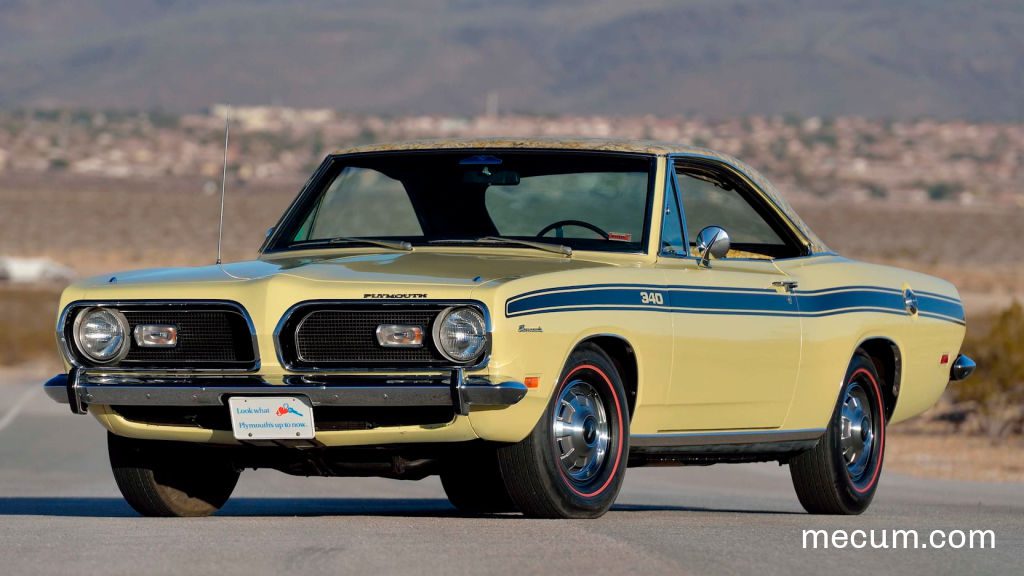
The 1969 Barracuda changed in terms of styling. The car featured new side markers added to the front fenders to comply with new safety regulations. The tail lamps were also redesigned, and the car now featured a more refined look than the previous year’s model. One of the most notable optional features in 1969 was the Mod Top, which included a floral-patterned vinyl roof and matching seat inserts.
The 1969 model year offered the 440 cubic inch V8 engine as an option. This engine produced 375 horsepower and 480 lb-ft of torque, making it the highest-performance engine option available that year. The 440 V8 engine provided even more power and performance than the 383, 340, and 318 engines, and it was a popular choice among those who wanted a truly high-performance muscle car.
Despite the changes made to the car, production numbers for the 1969 Barracuda remained relatively high. A total of 31,987 were produced that year. This made it one of the most successful years in terms of sales. The car’s popularity grew as it gained a reputation as a stylish and sporty option in the pony car market.
- Body Length: 192.8 inches
- Wheelbase: 108 inches
- Curb Weight: 3,130-3,380 lbs
- Number Built: 31,987
- Base Price: $3,027
1969 Engine Options
| Engine | Horsepower | Torque |
|---|---|---|
| 318 cid V8 (2bb) | 230 | 320 lb-ft |
| 340 cid V8 (4bbl) | 275 | 340 lb-ft |
| 383 cid V8 (4bbl) | 330 | 425 lb-ft |
| 440 cid V8 (4bbl) | 375 | 480 lb-ft |
1969 Production Figures
| Bodystyle | Production |
|---|---|
| Notchback | 12,757 |
| Fastback | 17,788 |
| Convertible | 1,442 |
| Total | 31,987 |
1970 Barracuda
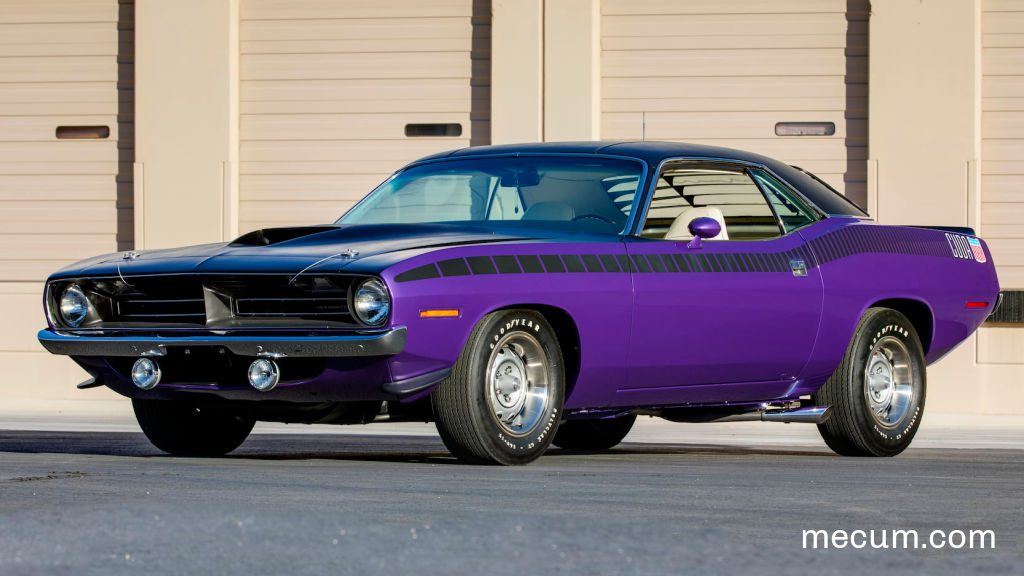
The 1970 Barracuda marked the beginning of the E-body generation, with a complete redesign that included a lower and wider stance, a more aggressive look, and improved handling. This year also introduced the Shaker Hood, an optional air intake system that protruded through a hole in the hood, shaking with the engine’s vibrations.
The base model was available with the Slant-6 or the 318 cubic-inch V8 engine. At the same time, the ‘Cuda offered the 340 cubic-inch V8, the 383 cubic-inch Super Commando V8, and the new 440+6 V8 engine, producing 390 horsepower and 480 lb-ft of torque. This year also saw the introduction of the legendary 426 cubic-inch HEMI engine, producing 425 horsepower and 490 lb-ft of torque. In November 1969, Car Craft magazine reported that a 70 HEMI Cuda had completed a quarter-mile pass in 13.10 seconds while traveling at 107.1 miles per hour.
The AAR ‘Cuda, a special-edition Plymouth Barracuda built in 1970, was designed to commemorate the All American Racers (AAR) team’s participation in the Sports Car Club of America’s (SCCA) Trans-Am racing series. Driven by renowned racer Dan Gurney, the AAR ‘Cuda was a high-performance, street-legal version of the race car.
This limited-production model featured a unique 340 cubic-inch V8 engine with the “Six Pack” induction system, which utilized three two-barrel carburetors to produce 290 horsepower. The AAR ‘Cuda also boasted a distinctive fiberglass hood with a functional hood scoop, side-exit exhausts, a front chin spoiler, a rear ducktail spoiler, and special AAR badging.
In addition to its performance-oriented features, the AAR ‘Cuda came with heavy-duty suspension, upgraded brakes, and a rear sway bar, significantly improving the car’s handling capabilities. With only 2,724 units produced, the AAR ‘Cuda remains a rare catch. A total of 55,499 Barracudas were produced in 1970, with 14,966 being the ‘Cuda models.
- Body Length: 192.8 inches
- Wheelbase: 108 inches
- Curb Weight: 3,363-3,692 lbs
- Number Built: 55,499
- Base Price: $3,020
1970 Engine Options
| Engine Displacement | Horsepower | Torque |
|---|---|---|
| 198 Slant-6 (1bbl) | 125 | 180 lb-ft |
| 225 Slant-6 (1bbl) | 145 | 215 lb-ft |
| 318 cid V8 (2bbl) | 230 | 320 lb-ft |
| 340 cid V8 (4bbl) | 275 | 340 lb-ft |
| 383 cid V8 (4bbl) | 300 | 410 lb-ft |
| 440 cid V8 (4bbl) | 375 | 480 lb-ft |
| 440 cid V8 (6bbl) | 390 | 490 lb-ft |
| 426 HEMI V8 (2x4bbl) | 425 | 490 lb-ft |
1970 Production Figures
| Bodystyle | Production |
|---|---|
| Base Hardtop | 25,651 |
| Base Convertible | 1,554 |
| Gran Coupe HT | 8,183 |
| Gran Coupe CV | 596 |
| Cuda Hardtop | 18,880 |
| Cuda Convertible | 635 |
| Total | 55,499 |
1971 Barracuda
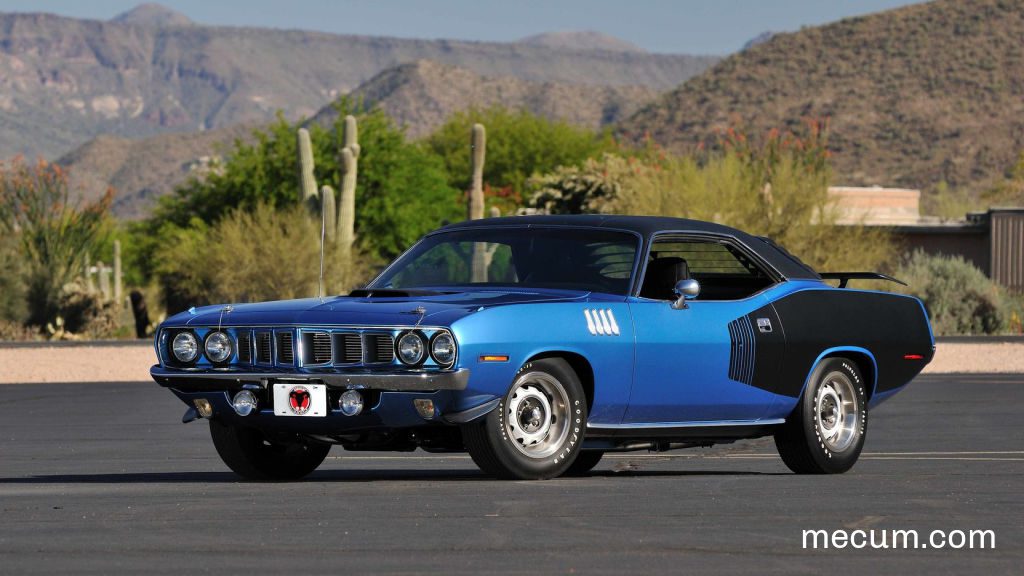
The 1971 Barracuda received some minor styling changes, including new grille designs for both the base model and the ‘Cuda, as well as revised taillights and fender gills.
The base model still offered the Slant-6 and 318 cubic-inch V8 engines, while the ‘Cuda lineup expanded to include the 340 cubic-inch V8, the 383 cubic-inch Super Commando V8, the 440+6 V8, and the 426 cubic-inch HEMI V8. In April 1971, Super Stock and Drag Illustrated reported that a 426 Hemi-powered vehicle completed a quarter-mile pass in 13.72 seconds, traveling at 106 miles per hour.
The Gran Coupe was another addition to the lineup, offering a more luxurious interior and exterior trim. Production numbers dropped in 1971, with only 16,159 Barracudas produced and 6,228 being the ‘Cuda models.
- Body Length: 192.8 inches
- Wheelbase: 108 inches
- Curb Weight: 3,360 lbs
- Number Built: 18,690
- Base Price: $3,164
1971 Engine Options
| Engine | Horsepower | Torque |
|---|---|---|
| 198 cid Slant-6 | 125 | 180 lb-ft |
| 225 cid Slant-6 | 145 | 215 lb-ft |
| 318 cid V8 (2bbl) | 230 | 320 lb-ft |
| 340 cid V8 (4bbl) | 275 | 340 lb-ft |
| 383 cid V8 (2bbl) | 275 | 375 lb-ft |
| 383 cid V8 (4bbl) | 300 | 410 lb-ft |
| 440+6 cid V8 | 385 | 490 lb-ft |
| 426 HEMI V8 | 425 | 490 lb-ft |
1971 Production Figures
| Bodystyle | Production |
|---|---|
| Base Hardtop | 9,459 |
| Base Convertible | 1,014 |
| Gran Coupe HT | 1,615 |
| Cuda Hardtop | 6,228 |
| Cuda Convertible | 374 |
| Total | 18,690 |
1972 Barracuda
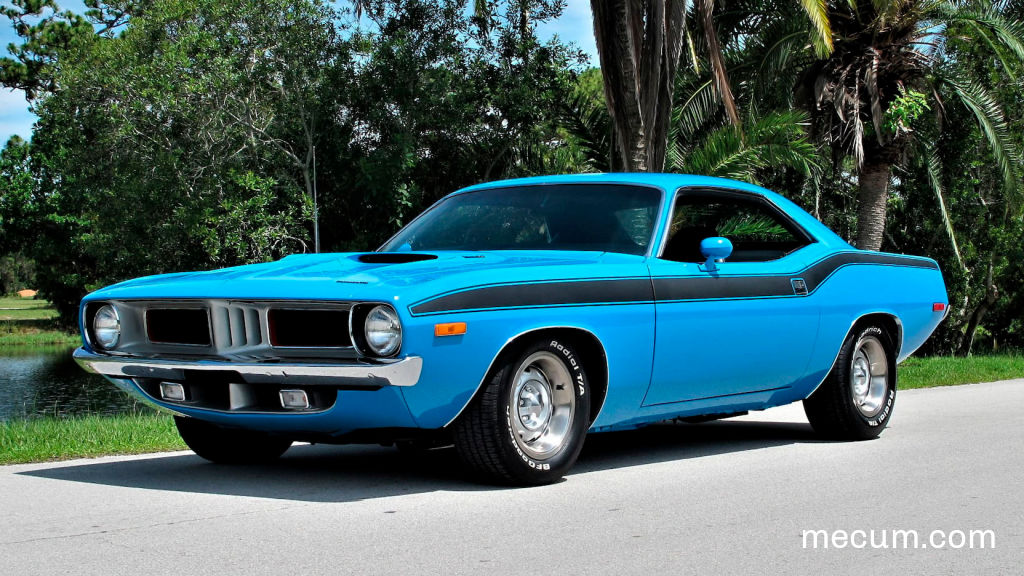
The 1972 Barracuda saw the discontinuation of the convertible body style, leaving only the fastback and notchback options.
The Slant-6 and 318 cubic-inch V8 engines remained available for the base model. At the same time, the ‘Cuda was offered with the 340 cubic-inch V8 engine, now rated at 240 horsepower due to changes in horsepower measurement standards. Car and Driver magazine’s January 1972 issue reported that a 340-equipped Cuda achieved the best quarter-mile time of 15.5 seconds while traveling at 91.7 miles per hour.
The 383 cubic-inch Super Commando V8, the 440+6 V8, and the 426 cubic-inch HEMI V8 engines were no longer available. Styling changes included a revised grille, taillights, and side markers. Production numbers declined in 1972, with 18,450 produced and only 7,828 being the ‘Cuda models.
- Body Length: 192.8 inches
- Wheelbase: 108 inches
- Curb Weight: 3,232 lbs
- Number Built: 18,450
- Base Price: $3,127
1972 Engine Options
| Engine | Horsepower | Torque |
|---|---|---|
| 225 cid Slant-6 | 100 | 160 lb-ft |
| 318 cid V8 | 150 | 260 lb-ft |
| 340 cid V8 | 240 | 290 lb-ft |
1972 Production Figures
| Bodystyle | Production |
|---|---|
| Base Hardtop | 10,622 |
| Cuda Hardtop | 7,828 |
| Total | 18,450 |
1973 Barracuda
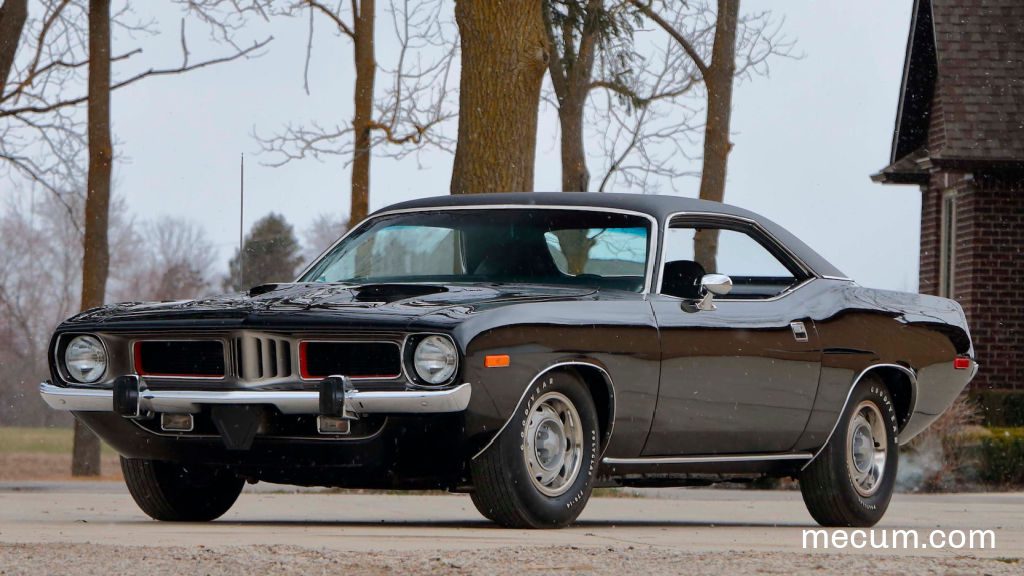
The 1973 Barracuda featured several updates, including new front and rear bumpers to meet federal safety standards and a redesigned grille and taillights.
The base model continued to offer the Slant-6 and 318 cubic-inch V8 engines, while the ‘Cuda was powered by the 340 cubic-inch V8 engine, now equipped with electronic ignition for improved reliability. Super Stock and Drag Illustrated magazine’s March 1973 issue reported that a 73 ‘Cuda achieved the best quarter-mile time of 15.16 seconds while traveling at 94.1 miles per hour.
Production numbers for the 1973 Barracuda reached 22,213 units, with 10,626 being the ‘Cuda models.
- Body Length: 192.8 inches
- Wheelbase: 108 inches
- Curb Weight: 3,150 lbs
- Number Built: 19,281
- Base Price: $3,027
1973 Engine Options
| Engine | Horsepower | Torque |
|---|---|---|
| 225 cid Slant-6 | 105 | 170 lb-ft |
| 318 cid V8 | 150 | 260 lb-ft |
| 340 cid V8 | 240 | 290 lb-ft |
1973 Production Figures
| Bodystyle | Production |
|---|---|
| Base Hardtop | 9,976 |
| Hardtop | 9,305 |
| Total | 19,281 |
1974 Barracuda
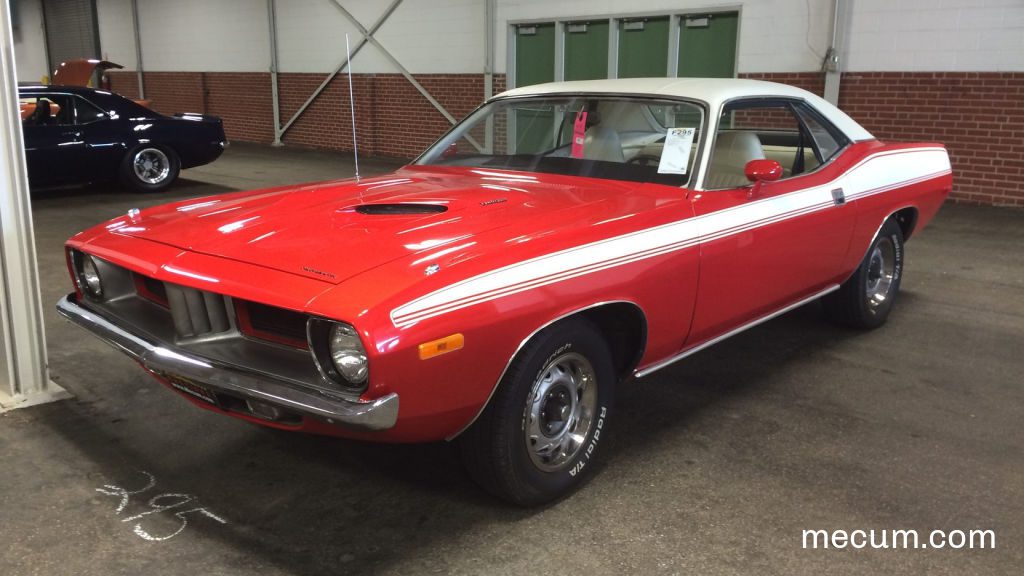
The final year of Barracuda production, 1974, saw few changes from the previous year. The base model still featured the Slant-6 and 318 cubic-inch V8 engines, while the new 360 cubic-inch V8 engine, producing 245 horsepower and 320 lb-ft of torque, replacing the 340 cubic-inch V8.
The styling remained mostly unchanged, except for new rear bumper guards. Due to the increasing focus on fuel efficiency and emissions standards and the impact of the oil crisis, Barracuda’s production ended in 1974. 11,734 Barracudas were produced in its final year, with 4,989 being the ‘Cuda models.
- Body Length: 192.8 inches
- Wheelbase: 108 inches
- Curb Weight: 3,160 lbs
- Number Built: 11,734
- Base Price: $3,119
1974 Engine Options
| Engine | Horsepower | Torque |
|---|---|---|
| 225 cid Slant-6 | 110 | 170 lb-ft |
| 318 cid V8 | 150 | 260 lb-ft |
| 360 cid V8 | 245 | 320 lb-ft |
1974 Production Figures
| Bodystyle | Production |
|---|---|
| Base Hardtop | 6,745 |
| Cuda Hardtop | 4,989 |
| Total | 11,734 |
Related Questions
The Plymouth Barracuda was a series of two-door pony cars produced by the Plymouth division of the Chrysler Corporation from 1964 to 1974. It was introduced as a fastback version of the Plymouth Valiant and was originally marketed as the “Valiant Barracuda.” it went through three generations featuring major design and performance changes.
The Plymouth ‘Cuda was a high-performance version of the regular Barracuda model, introduced in 1969 as a separate model line. While the ‘Cuda and Barracuda shared the same body style, the ‘Cuda had upgraded suspension, brakes, and engine options for higher performance. Additionally, the ‘Cuda featured unique styling cues, such as a distinctive hood with dual hood scoops and a larger rear spoiler. The ‘Cuda was retired in 1974.
A 1971 Plymouth HEMI ‘Cuda Convertible, one of only three ever produced for the US market with a powerful 426/425-hp V8 engine and a 4-speed manual transmission, was sold for $3.5 million dollars. To this day, no other muscle car has sold for such a staggering amount.
Conclusion
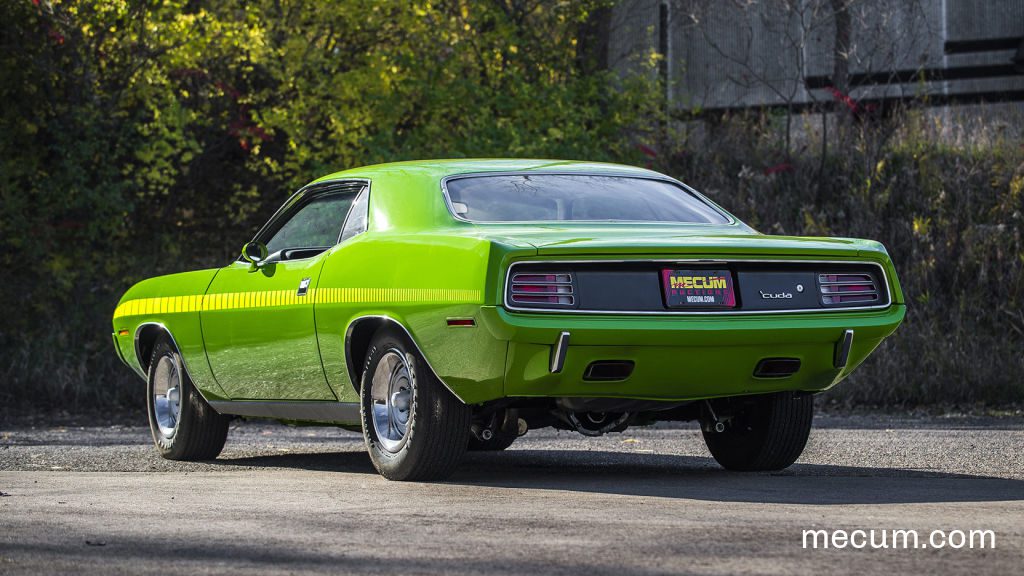
From its inception in 1964 to its final production year in 1974, the Plymouth Barracuda earned its place in automotive history as a true American pony car.
Its various body styles, powerful V8 engines, and unique features like the AAR, Pistol Grip, and Shaker Hood evolved through the years to cater to car enthusiasts’ diverse tastes and preferences.
Although the ‘Cuda is no longer in production, its legacy lives on in the hearts of muscle car fanatics. The Plymouth Barracuda’s legendary status as a pony car competitor to the Ford Mustang, Chevrolet Camaro, Pontiac Firebird, and Dodge Challenger.
Take Our Poll!
"*" indicates required fields

Ryan Wheaton
Ryan has owned muscle cars since 1986 and currently owns a 1972 Dodge Charger Rallye. He combines passion and experience to create engaging content for fellow muscle car enthusiasts. In 2018, he founded Muscle Cars Illustrated, authoring hundreds of articles on tips, history, and trends in the muscle car industry. He attends national car shows, auctions, and museums to stay current with the latest developments in the muscle car industry.
